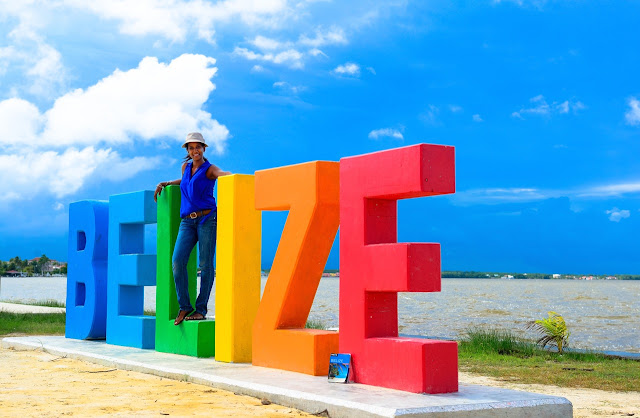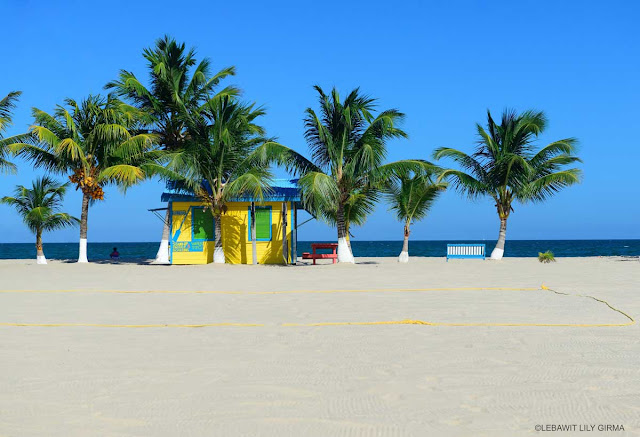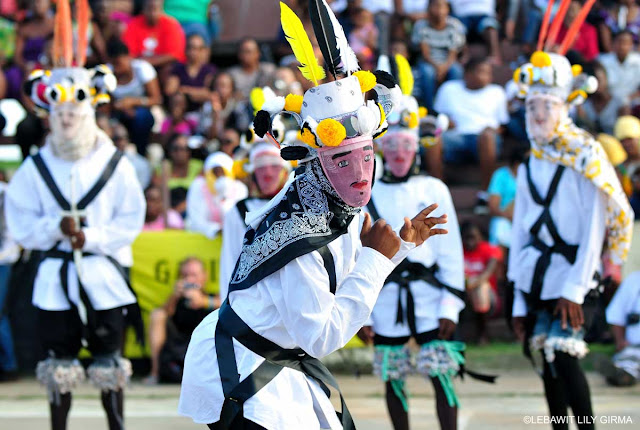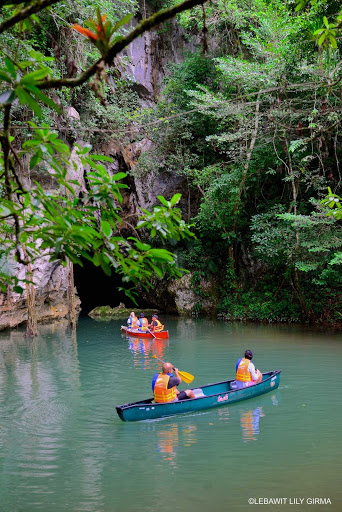Belize - gorgeous waters, perfect for diving and snorkeling; ancient ruins; rainforests and caves; the tallest waterfall in Central America; wildlife and marinelife; and a deep culture that entices you to explore more deeply. Affectionately called "The Jewel" by locals, this is a destination worth exploring. I recently read Moon Guides Belize, by Lebawit Lily Girma, and let me tell you - I'm impressed.
Moon Guides are some of my favorite guidebooks, for the deep look into local culture, in addition to interesting things to see, do, taste, explore. I've long followed Girma online, for her intriguing travels, her extraordinary writing and photography, and her deep look at culture. A former lawyer, she's the expert on the Caribbean region - I'm constantly referring travelers to her sites and books for advice. So when this book came out, I knew I'd love to share it with our Wandering Educators. It's that good.
Moon Guides Belize has much to offer. The main sections include:
* Discovering Belize
* Belize City
* The Northern Cayes
* Belmopan and Cayo
* Southern Coast
* Punta Gorda and the Toledo District
* Northern Belize
* The background of Belise (my favorite part!)
* Essentials, including getting there and around, accommodations and food, tips, health and safey, and information and services
* Resources
* an Index (thank you! My second favorite part of any book)
* A list of maps
What I love about this book is the depth of Girma's knowledge. Whether it is diving, accommodations, what to eat, or even how it feels to be there, she's a masterful travel writer who can both entice and inform. As with all Moon Guides, the recommendations are also split out by cost, so you're not reading about something and then discovering it is WAY more than you can afford. All the photos were taken by Girma, and show another side of her that I appreciate - that of the visual learner.
This is the best guidebook I've ever seen about Belize, and one of my favorite guidebooks ever. I dare you to read this and NOT plan a trip to Belize. I keep mine in the car, and it's filled with little slips of paper for all that I want to see and do. Honestly, with all those little bookmarks, the book is about 3 times the size as when it came into my grateful keeping. Highly recommended.
We were lucky enough to catch up with Lily, and ask her about the book, inspiration, research, photos, unusual things to discover in Belize, and more. Here's what she had to say...

Please tell us about your new book, Moon Belize...
Moon Belize was my first guidebook for Moon Travel Guides. I took over the title in 2012, and revamped it with my own outline and rewrote 85% of it the first go around. My second edition was just published in December 2015.
Moon Belize is a special guidebook because it focuses on cultural experiences, and is super informative on Belizean history, topography and the outdoors. It's all about culture, adventure and immersion with nature and people. It has curated picks on hotels (for various budgets)–including homestay or camping options–activities, and restaurants. I've done all of it myself–and best of all, the whole book is in color. This was a first, with my 2013 edition.

What inspired you to write this travel guide?
I love Belize, and I had already invested a lot of time getting to know the country and writing about it. Prior to the opportunity with Moon Guides, I had first visited Belize solo for three weeks in 2010. A year later I was offered a three-month gig with the Belize Tourism Board as a visiting blogger, writer and photographer, in collaboration with a US online travel magazine, to explore all over the country and write about it (talk about a dream job). And in those three months I got to know Belize even more–and participated in so many activities, hotel stays, events and festivals, you name it. I lived in Belize for four consecutive winters (six months at a time each year) after that experience.
After all the blog posts, the photos, the articles I produced, it just felt like a natural next step when Moon Guides opened up the position, and then offered me the chance to submit a book proposal.
I was also inspired to do it because I had yet to see a guidebook that was really portraying the essence of Belizean culture and its people. Moon was always the best pick of the lot among major guidebooks in my mind, but I could also see a lot that I could improve and add in terms of giving it more of a cultural bent. I'm fortunate that my publisher holds the same beliefs about what travel should be, and trusted in my expertise in letting me shape the content.

I'm all about the research - what was it like, researching your book? What surprised you the most?
Yes! The research is the most interesting, exciting part. It was grueling the first time around, because of the sheer volume of work–from rewriting to making my rounds around the country. It might seem small, but Belize is packed with things to see and do.
The travel schedule was as hectic as I expected. Because I knew Belize well already, there wasn't much that shocked me in terms of findings. But what did surprise me was how many locals had no idea what a guidebook was (whether print or online). Some would ask me if they could pay to be in it. Others knew all too well and told me it brought them a lot of business. Business owners happily collaborated to help me get what I need or experience their properties and activities. Their in-depth knowledge of the country always amazes me, and a guidebook is a great resource thanks to that collaboration.
Another surprising aspect was how much I kept learning about Belize with each research trip, even though I had already visited the whole country. It's a fascinating place. Getting to know the Garifuna culture better, for example, was a highlight–experiencing their Settlement Day reenactment and festivities in Dangriga was unforgettable.

You took all the photos! They are amazing - and inspiring. What are some of the highlights of Belize, for travel photographers?
Thank you so much. I had already gathered a huge collection of Belize images over the years, before I became a guidebook author. With all those long term stays, you can imagine how many hard drives I have filled up with Belize!
Some of the highlights for travel photographers: the southern cayes for island photos (South Water Caye, Laughingbird Caye, for example). Caye Caulker is also the most photogenic island, in my opinion–between the landscape and the every day island village life scenes.
Inland, the Cayo District is ideal for countryside and nature shots–from farmers' markets and scenic rivers to horseback riding, Mayan farms and Mennonite villages. Xunantunich Maya Site makes for gorgeous photos from the top of the temples, as does Caracol Maya Site. The Mountain Pine Ridge Reserve, Bocawina National Park, and Cockscomb Basin Wildlife Sanctuary are ideal for nature shots, including waterfalls.
For wildlife, it doesn't get better than Crooked Tree Wildlife Sanctuary, or the New River on the way to Lamanai Maya Site.

And even a Tropic Air flight from Belize City to Caye Caulker or San Pedro–which most people take when they arrive in Belize–will give you stunning "window" shots of Belize's iridescent blue sea and reef.

What are some of the most unusual aspects of Belize that visitors should seek out?
On the nature side, the Barrier Reef is without doubt a must–the marine life here is incredible, and most people haven't experienced this in the Caribbean. You just can't beat Belize when it comes to underwater experiences, or fishing adventures. The same goes inland with wildlife–there's always a wildlife encounter, whether it's a toucan or a howler monkey, or armadillos... you'll learn about plenty of creatures.
On the people side, Belize's Garifuna and Maya cultures are the most unique aspects, worth seeking out. Visit the villages and towns of the Garinagu people (plural of Garifuna) who live mostly on the southern coast, along the beaches–in Dangriga, Hopkins, Seine Bight and Punta Gorda for example. This Afro-Amerindian culture is firmly rooted in Belize, and they celebrate their own rituals, and have their own language and foods–all very African-influenced. You can take a drumming lesson in Hopkins, sample a dish of hudut–fish simmered in a coconut sauce, with mashed plantain–or dance to punta on the beach.
The Maya have traditional villages in the Toledo and Cayo districts, and you can visit for the day to see how they live–including learning how to make cacao or tortillas. Their villages are gorgeous, with huts surrounded with lush hills and nearby rivers.
The caves of Belize are fascinating as well–spelunking takes a whole new meaning here. Whether they're dry or wet caves, it's incredible to see human remains or left over pottery from the Maya days.
Finally, I recommend people visit Belize in September–known as the month of "September Celebrations." Belizeans celebrate independence for three whole weeks leading up to Independence Day on the 21st. I don't know any other country that does this. They have cultural events for three full weeks all around the country. And the biggest surprises are the Caribbean carnival parade in Belize City mid-September, and the mestizo-influenced carnival in Orange Walk on September 21–both with all the vibrancy and revelry one would expect, including stunning costumes. It's a great way to see Belize's incredible diversity in one place.

Do you have some tips for travelers, on how to be a good intercultural visitor?
Read and learn about the country before you visit (guidebooks are excellent sources to start). Be aware of the cultural norms, of the history, politics, and topography. You'll get an overall sense of the destination and its people. This is beneficial to you as a traveler and to the host country.
Practice responsible travel–that goes from minimizing your environmental footprint to supporting local businesses as much as is possible.
Be courteous and respectful in the host country. Greet them in their language. Get out and mingle with locals, frequent local establishments, ask about their home and cultures–they're always happy to share.
Sample new foods–in Belize there are over five cultural groups, which translates into a lot of delicious dishes.
Keep an open mind–don't judge and compare based on the norms or conveniences in your country, but also be an ambassador for your country wherever you go. Travel is about exchange.

What's up next for you?
I'm on the tail end of a huge project as the editor for the 2016 issue of Destination Belize Magazine–the country's main tourism publication, published by the Belize Tourism Industry Association. I also wrote all the major district introductions and theme articles for the magazine.
In the meantime, I've begun researching and updating for my next (third) edition of Moon Belize for 2017, and second edition of Belize Cayes, which focuses on the islands. This means I'll be traveling to Belize again this coming Fall and part of winter.
My first edition of Moon Dominican Republic will be released this October, so I'm excited about that–the guidebook will also be in full color. I have two big DR projects I've been working on behind the scenes, and that also keeps me busy. One of them is organizing my first customized cultural tour to the Caribbean for women (groups of no more than 10)–launching in February 2017, with a first trip to the DR.

Is there anything else you'd like to share?
I encourage everyone to keep traveling. It's the best education there is, and the best way to know your fellow human beings. Don't let the fear-mongering media or recent events deter you, but also be informed on your host country. Prepare, plan, stay informed, and go... with your trusted guidebook!
And last but not least, thank you for the interview.
http://www.amazon.com/Lebawit-Lily-Girma/e/B00J1QEYX8/
http://lilylilyphotography.com/
All photos courtesy and copyright Lebawit Lily Girma
Note:We received a review copy of this awesome guidebook from the publisher - thank you!
